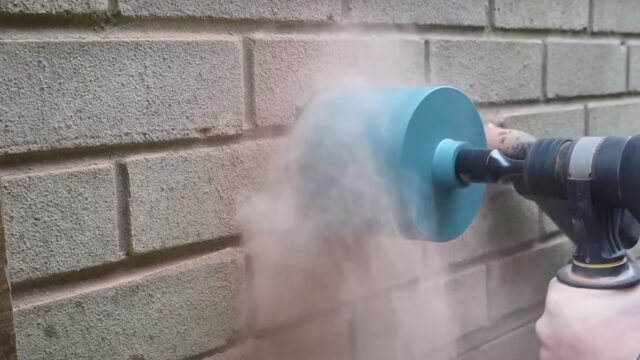If you’re contemplating a new window or simply need to run utilities through a stubborn concrete wall, you’re undoubtedly pondering the costs of concrete wall cutting. In Auckland, prices can range anywhere from $15 to $30 per linear metre, depending on factors like the thickness of the concrete wall and project complexity.
Concrete Coring Explained
When installing utilities or creating openings, you might come across concrete coring. This process involves extracting cylindrical sections from a concrete structure, typically through the use of a core drill. If you’re considering concrete coring services, be prepared to shell out around $100 per hole for diameters less than 50mm. Bigger or more intricate tasks might find you parting with upwards of $500.
Breaking Down Concrete Drilling
Concrete drilling, on the other hand, refers to the action of boring holes into concrete structures, usually using a diamond drill bit. The pricing metric here is typically per hole, with simple, small-scale projects costing around $20 each, while larger or more complicated tasks could reach up to $200 or more.
Suburb-specific Considerations in Auckland Impacting Cost
In the character-filled suburbs of Parnell and Ponsonby, brick structures are a common sight. Here, you might require the services of a brick cutter, with brick wall cutting costs falling between $15 and $25 per linear metre, again depending on the wall’s thickness. In contrast, the hilly terrain of Titirangi might require rock cutting, the cost of which can vary widely, so it’s always wise to obtain a custom quote from Auckland concrete cutters.
Navigating Auckland’s Health and Safety Requirements
Safety is paramount in any construction-related work, including concrete drilling and cutting. Be prepared to use safety glasses, dust masks, and hearing protection as these are requirements under Auckland’s Health and Safety regulations. Notably, the use of water is also mandatory to keep dust levels down when cutting concrete.
Understanding Council Bylaws and Regulations
Furthermore, Auckland council bylaws might influence your concrete cutting solutions. For instance, if you’re residing within the jurisdiction of the Albert-Eden Local Board, be aware of Local Bylaw No. 2016/7, which restricts noise levels during construction activities like concrete sawing. Over in the Franklin Local Board area, the Franklin District Plan – Chapter 32 Noise will be your guide to noise control.
The Precision of Concrete Scanning
Concrete scanning is a crucial preliminary step that helps avoid unintentional damage to embedded utilities, reinforcing bars, or post-tension cables. Expect to shell out anywhere from $300 to $600 for this preventative measure, depending on the size of the area that needs scanning.
Focusing on Specialised Services: Sawing and Core Drilling
Some construction endeavours require more specific services like sawing and core drilling. If you need a new door or window opening, concrete sawing will likely be on your list of needs, with costs usually starting at around $60 per square metre. As for core drilling, this involves creating cylindrical openings in concrete and could cost you anywhere from $100 to $500 per hole, based on the size and complexity of the task.
Sustainability and Environmental Considerations
Taking into account the environmental footprint of construction activities is vital. In a bid to minimise dust and thus protect workers and the environment, water is often used during concrete cutting. Ensure your chosen provider abides by such eco-friendly practices, even if it means slightly higher concrete cutting prices.
Wrap Up
This guide offers a ballpark estimate for costs tied to concrete cutting, coring, and drilling in Auckland, but remember that these can fluctuate depending on specific project details and local regulations, not to mention the very dynamic macro economic conditions New Zealand is currently facing (AKA inflation). For an accurate estimate, be sure to source several quotes and understand the specifics before commencing work. After all, the best way to ensure a smooth construction process is to be well-informed.





